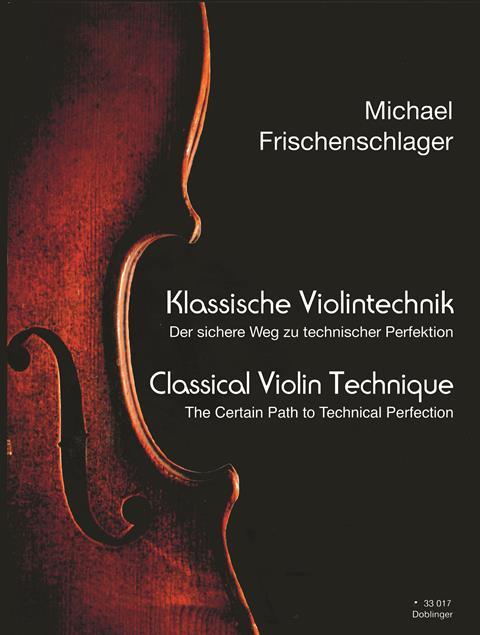A technical guide for violinists by Michael Frischenschlager
Classical Violin Technique: The Certain Path to Technical Perfection
Michael Frischenschlager
94PP ISBN 9790012206002
Doblinger €34.90

The extraordinarily bold title of this volume is certain to intrigue any teachers and students seeking to make the demands of the intricacies of violin technique more manageable.
The volume comprises technical exercises grouped in four ‘programmes’ developed by Michael Frischenschlager over nearly 50 years of teaching at the University for Music and Performing Arts in Vienna. The programmes are designed to get progressively more difficult, teaching the student everything necessary for ‘guaranteed success’.
Frischenschlager says that he is not offering any new exercises, but rather that he has ‘put together a selection of technical exercises [that] offer and enable the systematic training of the entire violin technique.’ He stipulates that each programme should be practised daily for a minimum of 90 minutes for two months each.
The programmes are certainly comprehensive in techniques. Programme 1 offers advice on basic position and movement exercises for both hands and body; basic bow strokes; basic shifting; basic double-stops and scales and arpeggios. Later programmes advance all these aspects. Interestingly, though, vibrato is not discussed until programme 3.
Frischenschlager is correct in that none of the exercises are new. Most can be found in the scale and technique volumes of Flesch and Galamian. It is therefore regrettable that his instructions on how to achieve the exercises are not better or clearer, so as to provide something extra that is useful. For example, he urges the use of a metronome yet offers no suggestion of metronome markings to aid a transition from a spiccato stroke to sautillé bowing. Even the basics of how to hold the violin are not clearly set out: the violin should be ‘at the correct angle on the collarbone’. Neither position on the collarbone nor the angle is actually described. There is an extraordinarily self-contradictory and equally uninformative juxtaposition of two sentences in how to hold a violin: ‘The violin must become part of the body. A shoulder rest is necessary for this.’
I was intrigued and pleased to see that the volume tackles how to produce both left-hand and right-hand pizzicato. It has long been my impression that little has been written on how to achieve this well. Unfortunately, Frischenschlager only devotes a few sentences to different types of pizzicato and does not go into the detail required for useful enlightenment. His advice on left-
hand pizzicato is that one must have strength in the fingers, and take breaks to avoid blisters. Certainly wise counsel but not pedagogically informative.
It will be clear that after the exciting promise of the title I am disappointed in this book. It comes across as a stern and rather opaque volume that does little to inform or encourage the reader to devote the hours stipulated. The presentation does not help either: the book is printed in parallel text columns in German and English, sometimes using rather small print.
Frischenschlager’s students persuaded him to create this volume. It reads like a book that may prompt students already versed in his methods to remember how to carry out the required exercises and programmes. It does not encourage a new student to tackle it from scratch, even with the promise of guaranteed success.
ALEX LAING



































No comments yet